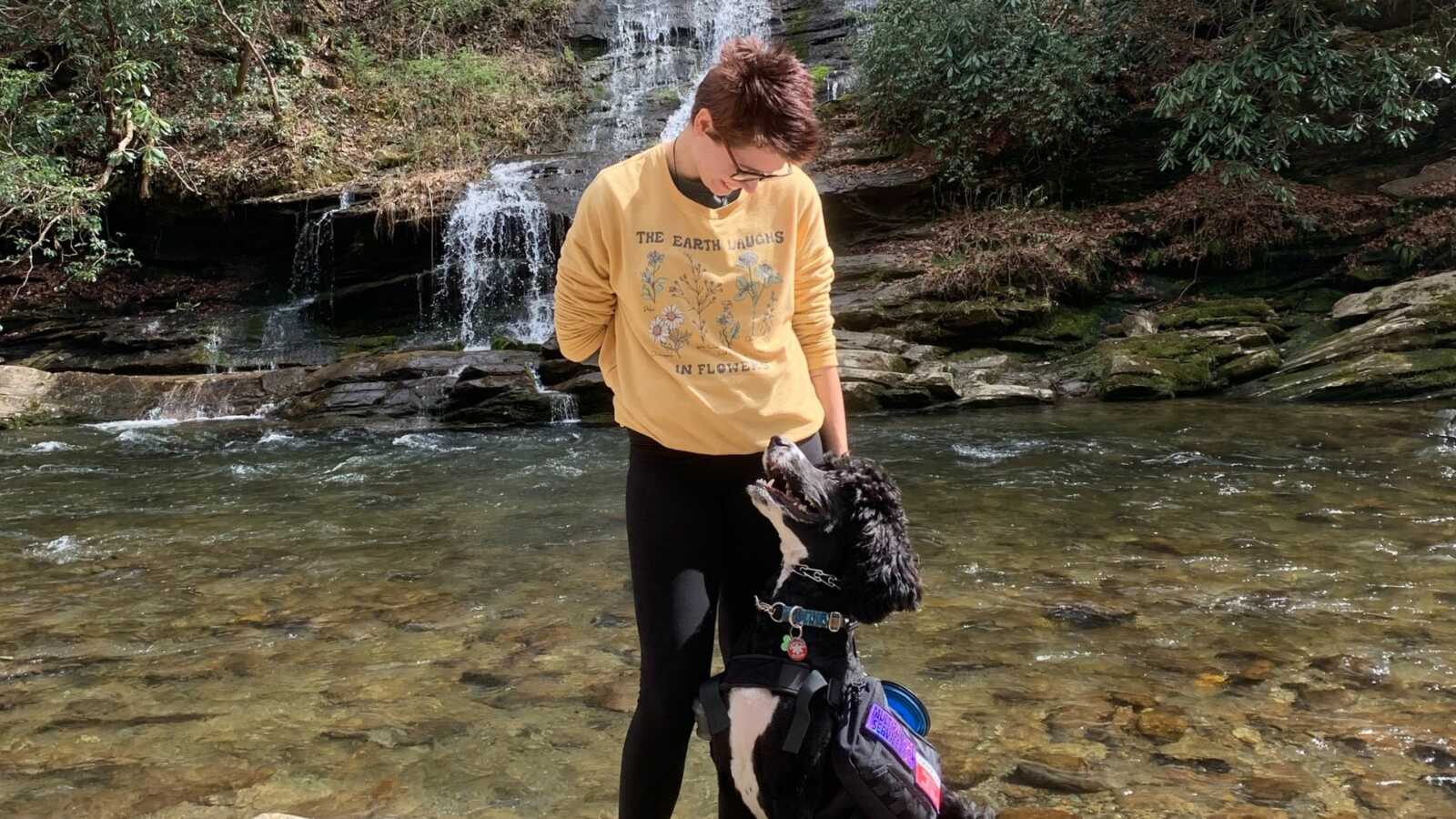Life Before Ehlers Danlos Syndrome
“‘You definitely have Ehlers Danlos Syndrome.’ The relief I felt when I heard those words from my doctor was indescribable.
Many people may wonder why being diagnosed with a chronic, progressive, and sometimes fatal disease would cause a feeling such as relief, but the path to get to the moment where I heard those words is the reason I sobbed in the car after that doctor’s appointment.
I wasn’t always sick and disabled, in fact, I was the exact opposite. I started playing sports when I was six. I started dancing at 13, I rode and trained horses for years, and I taught martial arts.
I even held three physically demanding jobs during my freshman through junior years of high school. I taught taekwondo, worked with a dog groomer and cleaned houses.
I was a go-getter. I had a six-pack that could make a lot of men in their 20s jealous. I loved my body.

Do not take that the wrong way, I had the usual insecurities. I struggled with an eating disorder, but I loved what my body could do. I loved what it was capable of.
I did deal with pain. In fact, I started seeing a chiropractor at 13.
I even went to a pediatrician that same year. I told her that sometimes my shoulders and hips felt like they were moving a little out of the socket.
She brushed it off. She told me there was an off chance I had something called ‘Ehlers Danlos Syndrome,’ but it is so rare that it was unlikely, and even if I did there is no cure so it was not worth diagnosing me. So I just kept pushing through.
It got worse over the years but I kept going. I would always mimic the saying I would hear from my taekwondo instructor, ‘Pain is just weakness leaving the body.’ I had a broken ankle that never healed right but I could brace it and move on.
Progressing Pain
My senior year was when the pain started getting worse. I was starting my day with coffee and ibuprofen. I was taking more than 1000 mg of ibuprofen a day, and it was not even touching the pain.
I was getting dizzy and winded more and more quickly. It felt like my body was getting weaker instead of stronger.
My joints were becoming more unstable. I was having trouble eating due to a lack of appetite and frequent vomiting.
Because of all these symptoms, I had to quit doing my favorite thing in the world; teaching martial arts. I lived and breathed that job. I told everyone in my life I quit because I was too busy, but in reality, I hoped that less strain on my body would resolve the issues I was having, instead, I kept getting worse.
I went to dozens of doctor’s appointments throughout my junior and senior years. They put me on medication for my migraines, iron pills, vitamin C, B12, and several other supplements. They also did a couple of MRIs and X-Rays.
But I heard the same conclusions over and over again. ‘There’s nothing wrong with you,’ ‘It’s in your head,’ ‘You’re a hypochondriac,’ ‘It’s diffuse pain from your anxiety.’
So for two years, I gave up on doctors. I took every supplement I could think of and I got even sicker.
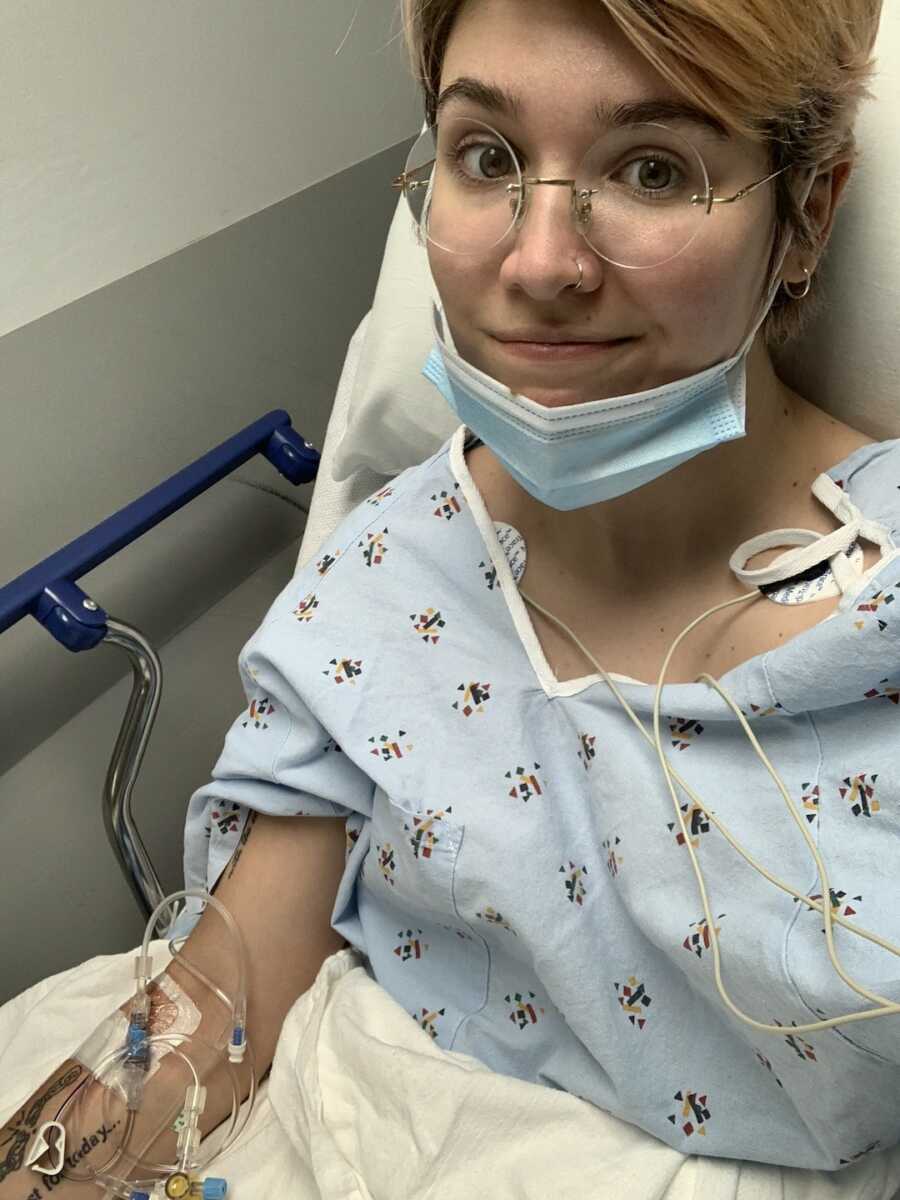
By the time I was 19 my sickness was becoming debilitating. I was struggling to work. I missed out on many activities I wanted to do because I knew I would get too dizzy and tired, or because I was in too much pain.
I got a dog and trained her on my own to be a psychiatric service dog, so at the very least I would not be limited by my mental illness. I got married before I turned 19, a month after I graduated, and a month later my husband left for boot camp so he could support us.
Through a long list of events, he ended up being gone for a year. So I was alone, getting worse, and trying to support myself.
POTS Diagnosis
I ended up in the hospital with a bilateral kidney infection that nearly killed one of my kidneys. During that hospital stay, two nurses noticed how my heart rate would spike when I sat up or stood. They called in a doctor who diagnosed me with Postural Orthostatic Tachycardia Syndrome or POTS.
Finally, I had an answer to one of my symptoms. My dizziness, fainting, and fatigue had a reason.
I finally had confirmation that something I was experiencing was real. I was not crazy. It was all really happening to me.
After my husband got out of boot camp, he insisted I quit my job so I could focus on my health, and I reluctantly agreed. He could support us both, even though it would still be 6 more months before we could be together again. My little psychiatric service dog also learned to alert me to my high heart rate and help me recover if I fainted.
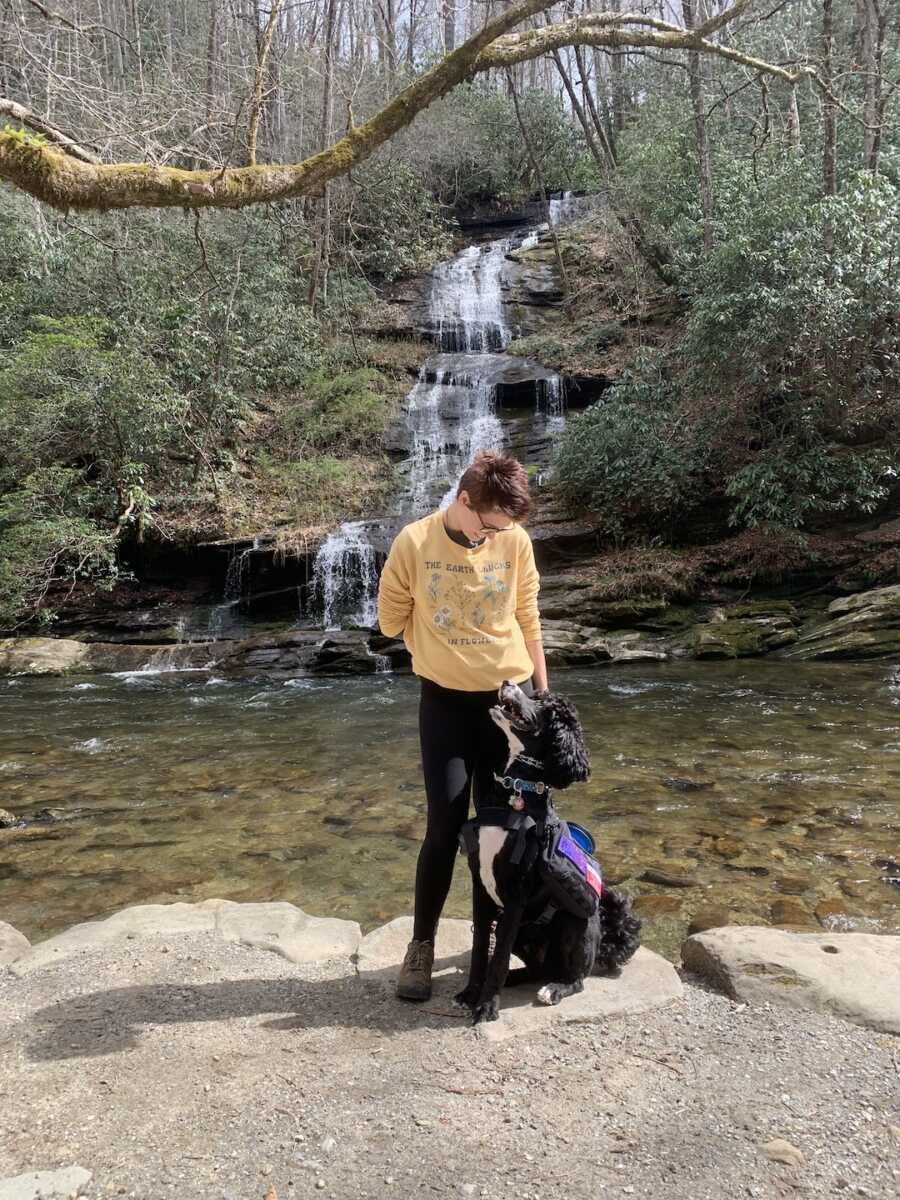
Searching For Answers
From there, I started the process all over again. I went to doctor after doctor, all primary care providers, but I still was not getting any more answers. I tried my best not to self-diagnose, but when a close friend of mine told me about her diagnoses, I started to notice some startling similarities.
She has POTS, but also something called Hypermobile Ehlers-Danlos Syndrome (h-EDS). Ehlers-Danlos is a rare illness that affects the cartilage in every part of the body.
It is understudied, and many doctors have never even heard of it. The more time I spent with her, the more the things that she described matched my own experience.
By this time, my joints would frequently dislocate and I would pop them back into place, something doctors insisted I must be lying about. My skin was soft, fragile, and bruised easily. I was prone to atrophic scarring.
It was through my friendship with her that I also learned POTS and EDS are often comorbid. She helped encourage me to keep fighting for my health.
Ehlers Danlos Syndrome Diagnosis
I tried many different specialists, I even tried seeing a holistic doctor and was left confused and crying. I finally went to see an internal medicine doctor. I came armed with notes and ready to fight.
I unloaded my whole story to him. I told him about the pediatrician I saw when I was 13, the hospital diagnosis of POTS (which never ended up in my chart), and all of my symptoms. He pulled up the diagnostic criteria for Hypermobile Ehlers-Danlos Syndrome and went through the entire list, checking all my symptoms and hypermobility.
To my complete shock, after he finished, he looked at me and said, ‘You definitely have Ehlers Danlos Syndrome.’ He set me up with a gastroenterologist, a hematologist, a pain management doctor, a cardiologist, and a neurologist.
When I got in the car after that appointment, I bawled. I was so relieved, I had confirmation that it was not all in my head. I had plans for the next steps and someone finally believed me.
When I finally calmed down, I pulled up my chart online and saw two new diagnoses listed: ‘Postural Orthostatic Tachycardia Syndrome,’ and ‘Hypermobile Ehlers-Danlos Syndrome.’ Then I cried some more.
Managing My Chronic Illnesses
Since then, I’ve seen a lot of doctors and I’ve had many tests. We are still not quite sure what is wrong with my digestive tract, but we are working on it. I have finally been treated for my chronic anemia with infusions, I am on pain meds, and we are trying different medications to help my heart rate for my POTS.
I go to physical therapy to try to strengthen the muscles around my loose joints. I have multiple appointments every month, but each one brings me a little closer to relief from my symptoms. In the meantime, I use mobility aids, including a cane, wheelchair, or braces, when needed and I wear compression socks help to keep my heart rate lower.
My new service dog is better suited to my physical needs. Liquid IV has been a lifesaver to manage my POTS. I do many things to be able to live the best life possible.
While I have many ways to fight my symptoms, I am still struggling. I dealt with a long bout of intense depression while adjusting to knowing there is no cure for my illness. I grapple with accepting I am disabled and I will never have my healthy body back.
At one point, my hair was falling out so badly that I had to shave it all off, which was a huge blow to my confidence. I often get stared at for using mobility aids in public or for having a service dog.
I sometimes experience ableism and deal with inaccessible places, such as buildings with doorways too narrow to get through in a wheelchair, or stores with isles so narrow my service dog cannot walk next to me.
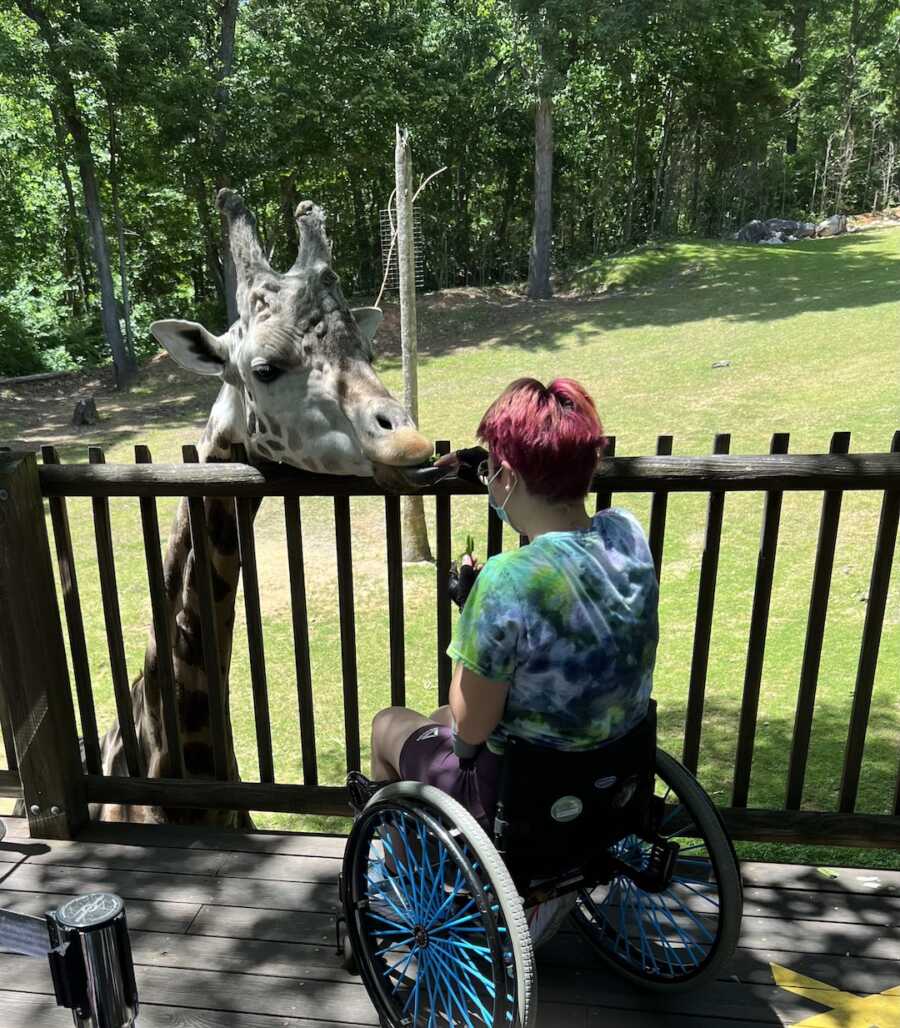
Even things in everyday life are more difficult, everything about my day takes longer than it used to. It is harder to shower than it once was; even harder to get out of bed.
It takes longer to get ready in the morning, going anywhere involves the process of getting both myself and my service dog ready to leave the house and packing a bag full of meds and liquid IV.
My life looks vastly different than it did in high school. Even my career trajectory has changed. I train dogs now, which is a path I never anticipated before becoming disabled.
Chronic Illness Awareness
I am lucky enough to have two people in my life who share this chronic illness, and we support each other to the best of our ability. If you are struggling with your health, I hope what you take away from this is the same sense of encouragement my friend gave to me.
There is help out there. You may have to fight to be heard, but it is worth it. You are worth it.
And if you do not deal with chronic illness, I hope you have gained a better understanding of what living with this type of disability looks like. There are people all around us living with invisible illnesses. An estimated 133 million Americans have a chronic illness, many of them impossible to see from the outside.
Disability does not have any particular ‘look.’ No one is ‘too young to be sick.’ A person may appear healthy while their body is waging a war you cannot see. Our illnesses may be invisible, but we are not.”
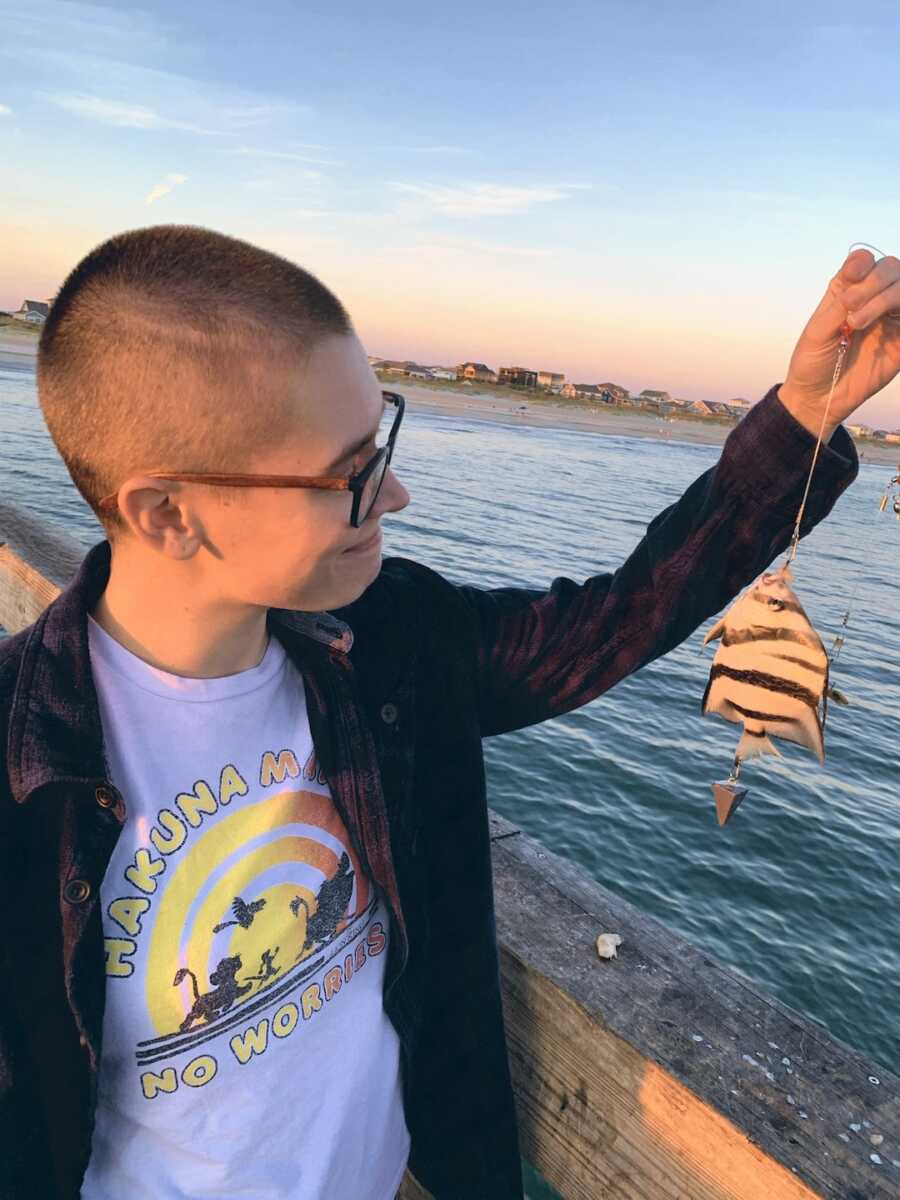
This article was submitted to Love What Matters by Zoe Finch of Havelock, NC. You can follow her on Instagram. Join the Love What Matters family and subscribe to our newsletter.
Read more like this:
Do you know someone who could benefit from reading this? SHARE this story on Facebook with family and friends.

